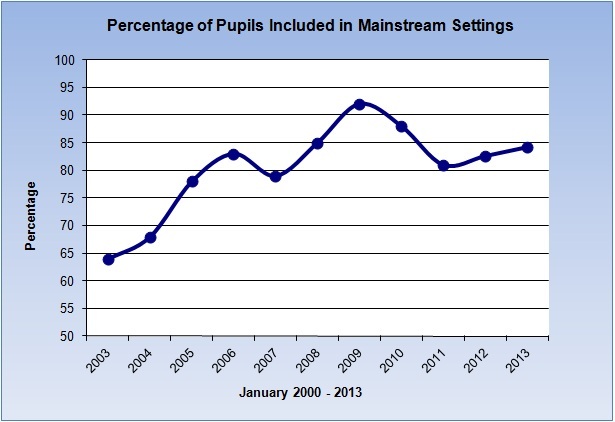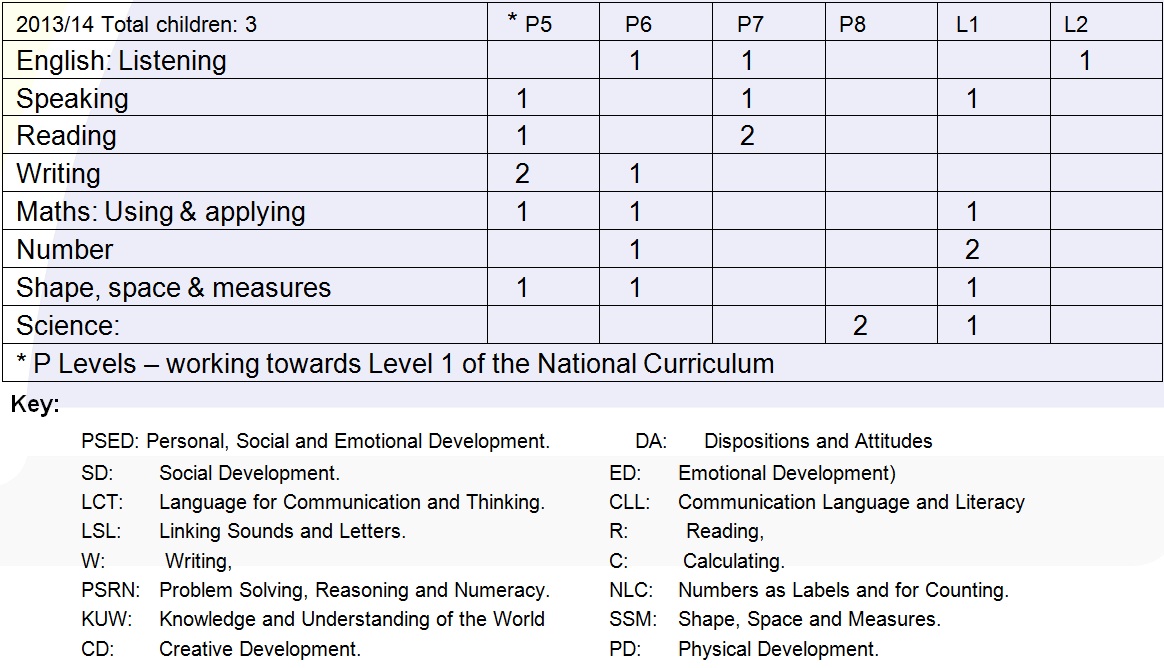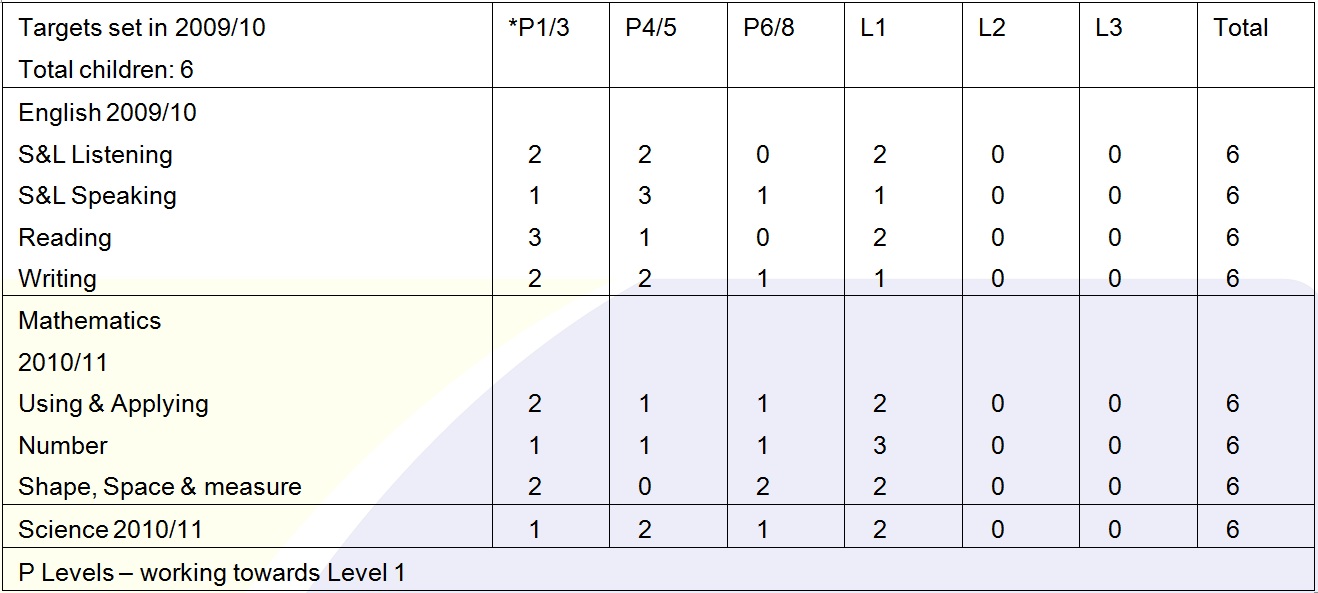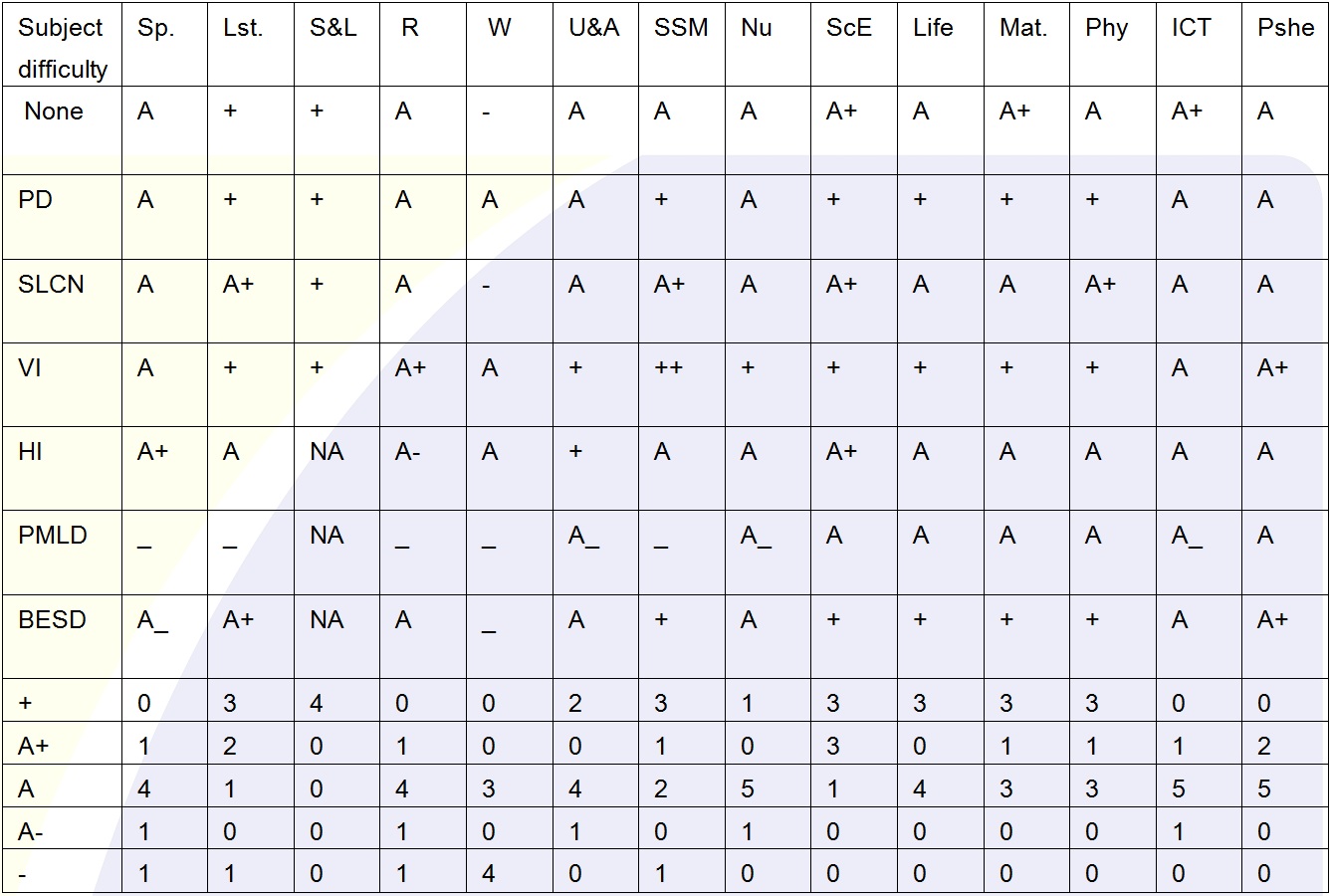Vranch House is a centre for the treatment of over 2,000 outpatients with physical difficulties, a provider of various therapies throughout Devon and an independent Day School in Exeter for children with significant physical difficulties.
Find out more...Last updated: 18/04/2024
Headteacher's Report 2012
VRANCH HOUSE SCHOOL PROFILE 2012
1) What have been our successes this year?
- The school underwent an Ofsted Inspection during this year. A copy of the latest report can be found on our website and extracts have been included at the end of this report.
- The sensory room has been completed and is now in regular use on a daily basis. We are also very pleased to be able to share this facility with our colleagues at Honeylands Assessment Centre.
- Links continue between the charity Whizz-Kidz and ourselves, which has included football skills and powered wheelchair skills workshops which are held on an annual basis during "Whizz-Kidz week" in June.
- We continue to work successfully with Exeter University and may also be welcoming teaching students for introductory visits from Bath Spa University during this year.
- The Administrative side of our MIS (management information system) within school has now been up and running successfully, for some time. The assessment side is due to be implemented in full during the next year.
- Class visits during this year have included the Donkey Sanctuary, Teignmouth Pier for a party, Middlemoor Police Headquarters to see the helicopters and the theatre to watch and enjoy "We're All Going on a Bear Hunt."
- We have also enjoyed visits from the Fire Brigade and the Charity Follow Your Dreams who have worked very hard to make some dreams come true for our pupils.
Chart: Inclusion

Eighty-one percent of pupils were included in mainstream schools on shared placements in January 2011. This is a slight decrease on last year's figure of eight-eight percent and this is due to the nineteen percent of pupils in school, who are not attending mainstream school at all at present, due to their profound and complex needs.
2) What are we trying to improve?
- Develop strategies to further support the acquisition of independent living skills
- Further develop curriculum resources.
- Embed agreed phonics approach throughout school.
- Improve IEP target setting, support and assessment within all areas of school.
3) How much progress do pupils make?
Pupils at Vranch House School make good progress when their baseline achievements are taken into account. The following section describes the results for Foundation, Key Stage 1 and 2 assessments during 2011/12. The results are compared to targets set two years previously.
Foundation Stage Assessment
The results of the Foundation Stage Assessment at the end of the 2011-12 academic year, demonstrate that the three children concerned are working towards early learning goals in all subjects.

All three pupils are working securely towards (0-3) or within (4-7) the Early Learning Goals. Their future targets for the end of Key Stage 1 (2013-14) are set out below and represent challenging targets of at least one level of progress.

National Curriculum Results for School Year 2011/2012
Review of Targets set for Key Stage 1 Assessment for Year 2011/12
Targets were set for 6 Key Stage 1 children for the academic year 2009/2010. Since these targets were set four of these children have moved to mainstream or alternative specialist education settings.

The remaining two children achieved all targets set for them with one child exceeding their target for Level 1 Listening by achieving Level 2.
Future Target for Key Stage 1 Assessment for year 2013/2014

These targets represent at least one and often two levels of progress and are considered to be challenging. As all three children are currently on a shared placement it is possible but unlikely that all three will have transferred to full time mainstream education by the end of the academic year 2013/2014.
Key Stage 2
At the time these targets were set two pupils were assessed. Since then one pupil has transferred full time to mainstream attendance.

For English the remaining pupil achieved their target for Speaking & Listening and Writing but achieved P5 instead of P6 for Reading.
For Mathematics this pupil achieved targets for Number and Shape, Space and Measure but achieved P5 instead of P6 for Using and Applying.
For Science this pupil achieved all targets.
For targets set in Spring 2012 this pupil achieved or exceeded all their targets.
Future Target for Key Stage 2 Assessment for Year 2013/2014
These targets are for one pupil who was Year 4 in the academic year 2011/2012. These targets are based upon PIVATS and Durham data and teacher assessment at the end of 2011/2012 and these targets will be monitored at the end of the academic year 2012/13 and reviewed and compared with previous results and national results at the end of the academic year 2013-14.

These targets represent at least one level of progress and are considered to be challenging.
4) How have our results changed over time?
Having examined target setting by teachers, Durham (www.cemcentre.org) and Pivats (www.lancashire.gov.uk/corporate/web/?PIVATS/14588) and by analysing the end of year results, we have decided to cease using Pivats and continue with a combination of teacher assessments and Durham data collection tools. This is mainly because the National cohort used by Durham includes the majority of children with learning and physical difficulties across the United Kingdom and is therefore far more finely tuned for comparison between the results of our pupils in school and those nationally.
When analysing the results of teacher assessments and targets overall, they compared well with 2 year targets set by the Durham and Pivats assessment tools. The teacher targets were set in the Spring Term this year, so were relatively short term.
In a few cases children have exceeded or not achieved targets in certain areas. This has been across all assessments (Teacher, Durham and Pivats). Unexpected results such as these appear to be due to individual circumstances such as illness or are due to a child making excellent progress. Specific details regarding this are included within each child's reports, reviews and personal assessment data.
There were no significant differences between individual teacher predictions and targets. We are moving towards making finer predictions for targets due to the introduction of small steps of progress between P Levels and we are also increasing our moderation activities between teachers to maintain our consistency across the school.
Evaluation of Whole School End of Year Assessment Data
Assessment results according to groups Results fromYears: 2011-12
This table illustrates the end of year data results for our pupils according to their main area of physical difficulty. This data has been collated following interrogation of Durham data charts for each individual area of difficulty and also for all the pupils together, which is the ‘none' category.
The key below is intended to explain the coding system.
The numbers at the bottom of the table illustrate how many of each of the groups has achieved at each level.

- Due to the nature of our pupils' difficulties it is understandable that speaking, reading and writing are either within the average band or below it. Nevertheless these are areas that need consideration to ensure that we are providing the best education and support possible. Particularly as the pupils are achieving so well for listening, which suggests that they are engaged and keen to learn and achieve.
- When compared with all children nationally, taking no difficulties into account, the pupils achieve mainly within the interquartile range but when compared with other pupils nationally who have physical difficulties Vranch pupils have achieved higher scores than the average, except for writing.
- The children with profound and multiple difficulties do not achieve such good results and we must continue to work towards improving these. It is however, good to see them heading towards an average score this year for numeracy, whilst already achieving within average levels for science, ICT and PSHE, which is an improvement on last years results. I would suggest that our sensory based curriculum has definitely supported these learners and that we should continue with this approach and investigate why these results do not follow across to literacy, particularly as these students are mainly at P Level 3 and below which means the P Level objectives are relatively generic across all subjects.
- BESD - we only have one child who has been categorised as BESD and it is good to see that these results demonstrate an able individual who is achieving well in comparison with his peers - when this child is singled out from the ‘none' section his/her progress in comparison with his/her peers is also within the average range. When compared with the physical difficulties group this pupil achieves just above average and this would be expected due to the nature of this pupil's physical difficulties (ambulant with reasonably good fine and gross motor skills)
- VI - it is good to see that the pupils who are in the VI group (which ranges from children with glasses to a significant proportion of children who are registered blind - ie almost 50%) have results which are predominantly above average across all subjects.
- S&L - the very good results for these pupils suggests that when interventions and teaching support work well together a pupil is likely to make excellent progress and these are the pupils' who are likely to move to full time mainstream education before the end of their primary schooling or upon entry to secondary school.
Action Plan:
- Listening and Science would appear to be strengths. This needs further investigation and explanation by the teaching team - teachers meetings, planning and moderation meetings will be used to discuss these issues and plan next steps.
- We need to monitor results for children with PMLD - aiming to establish why results are lower for literacy and some numeracy areas and identifying steps to remedy this.
- Regular snap shot assessments for these pupils throughout the year (3 times) alongside moderation of the results will help us to explore these issues.
- Speaking and writing remain priorities for ways of promoting and improving speech, communication and writing development. - write dance has been in place as a programme for two years now and Ipads and eye gaze systems have also begun to be used by pupils.
- It is anticipated that the gap for speaking and writing should reduce, but this needs to be monitored when IEP's are reviewed and at the end of the year to asses progress.
5) How are we making sure that every child gets teaching to meet their individual needs?
- Individual IEPs linked to statement of special educational needs and annual review, with a focus on personalised learning, individual needs and life skills development.
- Individual IEP targets included across all planning for class and group work, using a multi-professional approach.
- Formative and summative assessment including; Pre-entry assessment, Early Years Foundation Stage Curriculum profiles, assessment for learning Key Stage 1 and 2 assessment, annual assessment of National Curriculum and P Scale levels and sub levels, annual school report, annual and interim review reports.
- Annual monitoring of pupil progress using Durham data analysis.
- Moderation of individual pupil assessment, including links with mainstream schools.
- Regular meetings between staff to ensure children's needs are met.
- Targeted curriculum.
- Visits from Educational Psychologist and LA Advisory Teachers as necessary.
- Personal Education Plans for children with additional and complex medical or physical needs.
- Music therapy for some children, as appropriate.
6) What have pupils told us about the school, and what have we done as a result?
- Pupils have enjoyed the interactive displays in the corridors and we are continuing to develop an interesting indoor environment.
- There is a school council through which pupils have an opportunity to contribute towards ideas and decisions. For example the school council chooses the Christmas Play each year and helps to plan the Christmas Party.
- School Council Members take turns to show visitors around school, when possible
- We have been encouraging pupil voice across the school community.
7) How do we make sure our pupils are safe and well supported?
- School nurse on duty at all times and good staffing levels.
- Pupils are encouraged to let staff know if they have any problems.
- Regular clinics held at school: paediatric, orthopaedic, orthoptic, audiology and wheelchair clinics.
- Children's diets monitored.
- Effective links between home, respite, transport and shared placements to ensure up to date knowledge on dietary, behavioural, medical or communication needs are shared.
- Effective induction of new staff.
- Provision of healthy snacks at break times.
- Good standard of moving and handling, including regular updates and training.
- Comprehensive health and safety policy with regular premises checks.
- Closed circuit security cameras outside the building.
- Good security procedures - registration of visitors, car parking permits.
- Regular fire drills.
- High levels of investment in buildings and equipment and regular maintenance.
- Safeguarding policies in place and a high level of staff awareness.
- Regular child protection updates.
- Liaison with mainstream schools regarding issues such as attainment, moderation and attendance.
- Secure boundaries around school.
- Visitors to school informed re policy on use of mobile phones in school.
- Monthly support staff meetings to raise concerns or issues.
- A Staff Governor who provides an easily accessible link between staff and management. The Staff Governor represents the views of everyone at support and governors meetings.
8) How do our absence rates compare with other schools?
- Total number of pupils of compulsory school age on roll for at least one session - 19.
- Percentage of pupil sessions (half days) missed through authorised absence - 10.3% and through unauthorised absence - 0.15 %.
The authorised absence figure is higher than for the previous year (9.3% authorised and 0.0 unauthorised). This reflects the complex medical needs of some pupils and represents a third year of increase.
This year we have had four pupils (approx. 20%) who have had complex medical interventions or illnesses which have required hospital treatment.
These pupils each have absence rates of 15% or more. If the attendance data for these four pupils is removed the figures are 6.09% and 0.10% which are comparable with national data for special schools for the years 2010-2011 which are 8% and 2%. The 0.15% unauthorised absence is due to late arrival in school due to unavoidable transport difficulties.
(data taken from DfE Statistical First Release published in March 2012)
9) What activities are available to pupils?
- Broad and balanced curriculum.
- Music therapy sessions for individual children.
- Outdoor nature trail and classroom including tracker mobility device.
- ICT - children individually assessed and given full access to ICT with fully accessible Learning Resource Centre.
- Swimming / hydrotherapy.
- P.E. and Swimming badges/certificates (as appropriate).
- Holiday workshops such as swimming groups
- Range of educational visits off-site e.g. Northcott Theatre, Inclusive Playpark, Donkey Sanctuary
- Links with Whizz-Kidz Charity
- Sensory room
10) How are we working with parents and the community?
- Parent representative on the Governors.
- Signing and moving and handling courses and Therapy/School Open Weeks.
- In school training opportunities and workshops to encourage parents to try out equipment and ask the experts for advice
- Therapy sessions provided during holidays.
- Fund raising activities for charities by the children including Children in Need, Sign2Sing and Breast Cancer Awareness.
- Christmas Fayre.
- Student placements from universities.
- Parents and families invited to school events e.g. school play and Christmas Carols, Easter Bonnet parade, Achievement Awards assembly, Harvest Festival.
11) What do our pupils do after leaving this school?
Most of the pupils continue their placements in their mainstream partner schools, if they move to full inclusion before Secondary age. Some pupils go on to secondary mainstream or special schools depending on what is the most appropriate provision for the child's individual needs.
12) What have we done in response to our latest Ofsted Inspection in May 2012?
Extracts from Ofsted report in May 2012:
‘Vranch House School provides an good quality of education.‘
‘The outstanding quality of welfare, health and safety of pupils, including safeguarding, and the outstanding provision for their spiritual, moral, social and cultural development ensure that pupils make outstanding progress in their personal development.'
What the school could do to improve further:
- Improve consistency in teaching and learning by refining the learning goals in all lessons so that they are always matched precisely to the needs of the pupils.
2012-13 audit target to further develop whole school approach to Individual Education Plans (IEP's) and to ensure their use across school and departments. To make use of IEP's to further develop lesson plans which recognise individual targets for pupils and ensures differentiation, assessment opportunities and pupil progress.
- Build on the already good assessment procedures and implement the new assessment systems consistently in classes across the school so that academic progress can be tracked more precisely.
2012-13 audit target to implement the new MIS assessment systems and link these with Durham data tools and individual education plan target setting and reviews to provide a concise but efficient tracking tool to record and analyse pupil progress. Compare these results with National data and recognise opportunities for further refinements and improvements.
- Improve the curriculum by implementing plans to link more closely the learning and therapeutic aspects of pupils' educationake better use of the outdoor space to promote (learning in the Early Years Foundation Stage.)
2012-13 audit target to implement finer detail to individual education plans and to ensure that targets are meaningful and achievable for pupils to make progress and can be used across subjects and activities in this school, mainstream and often at home.




